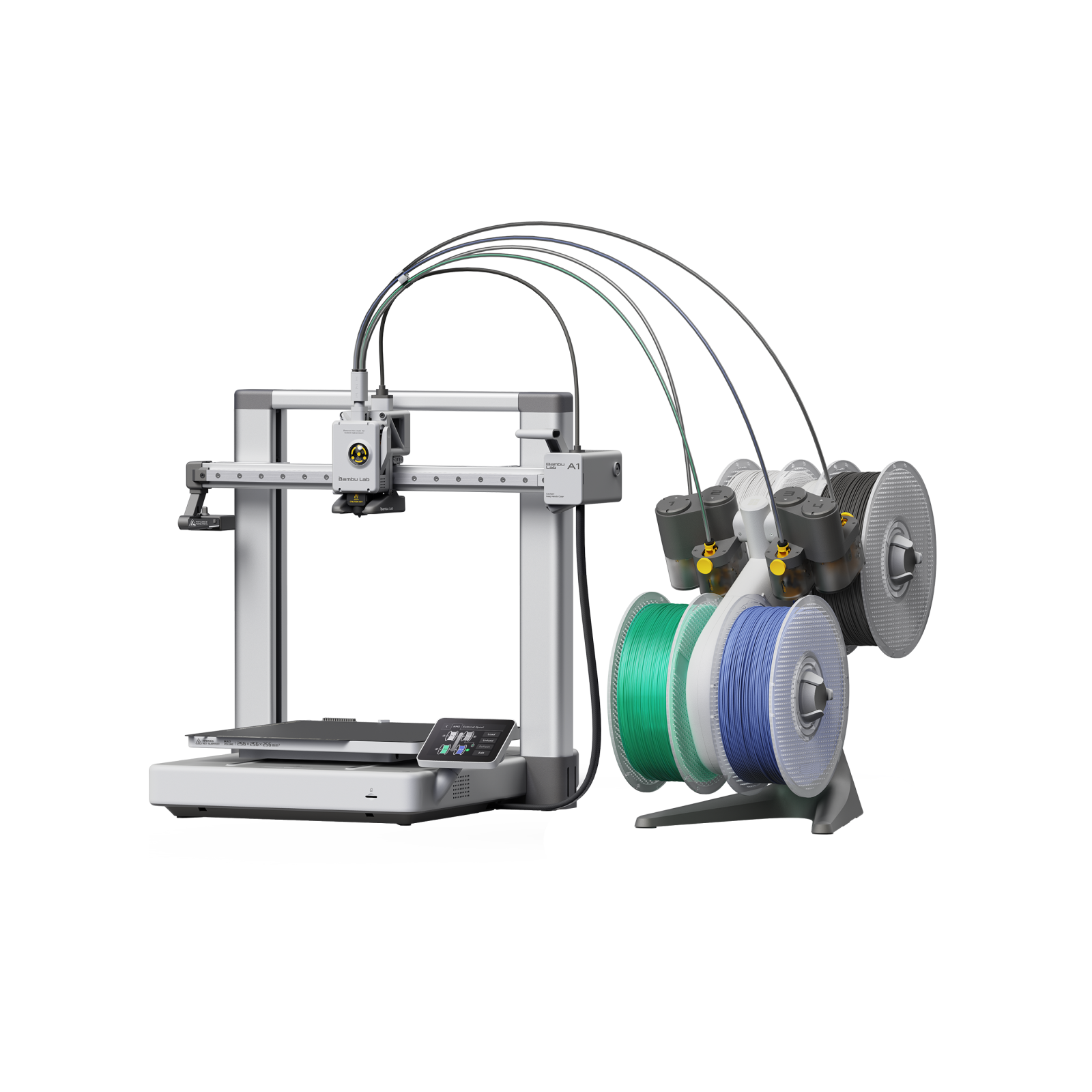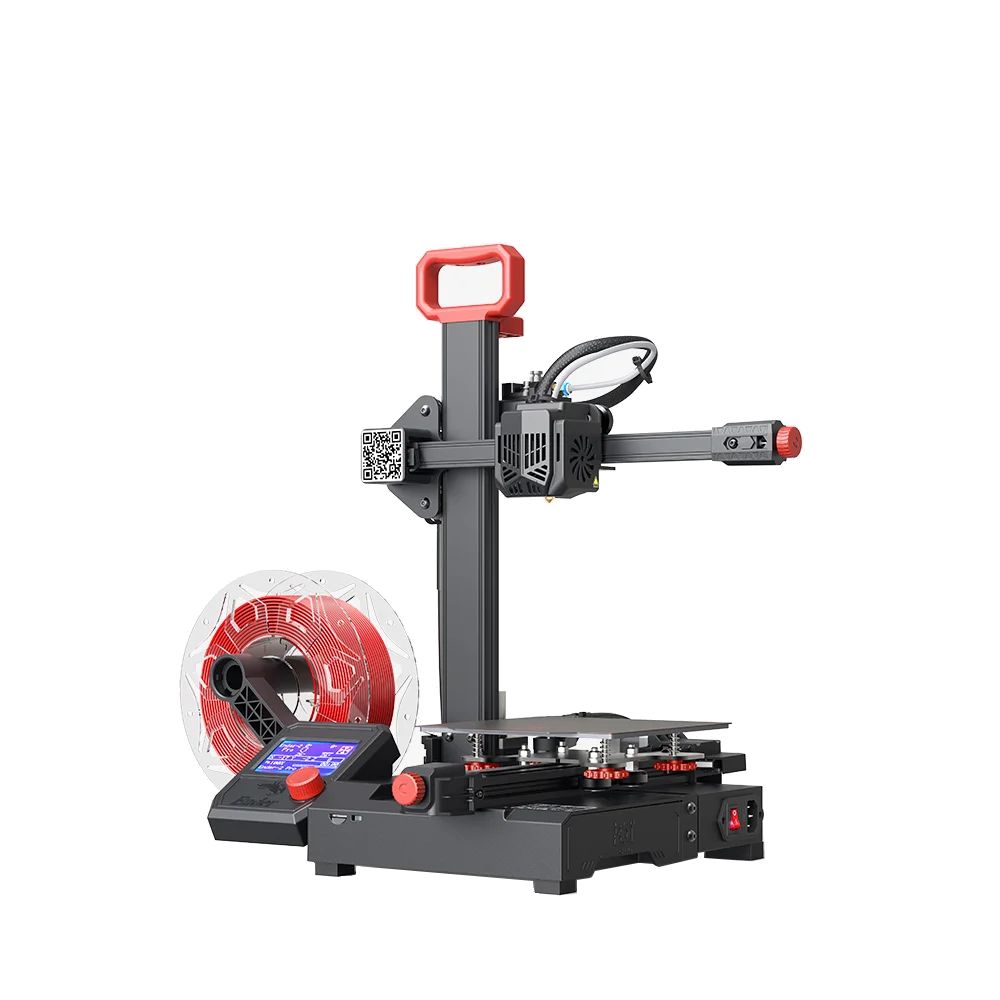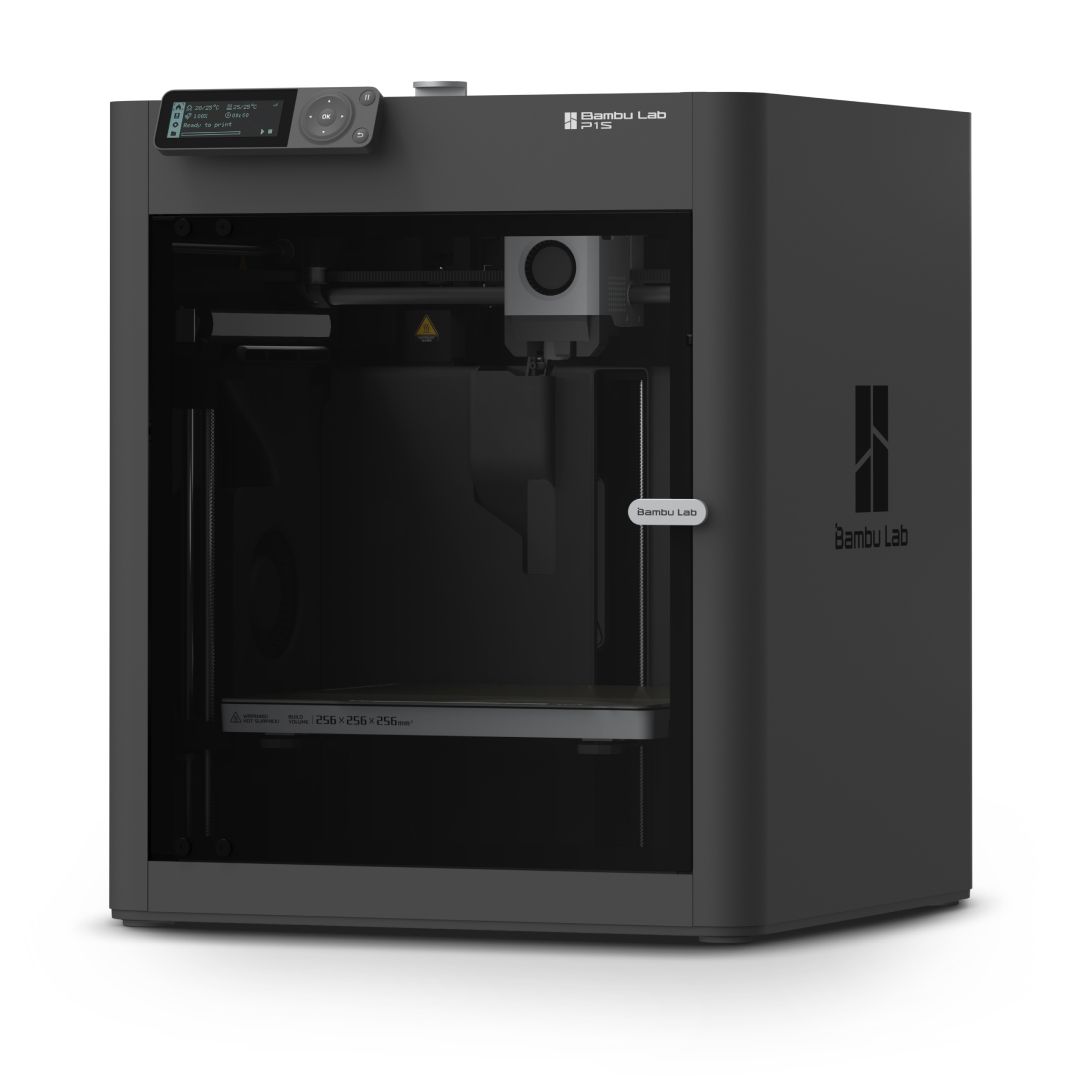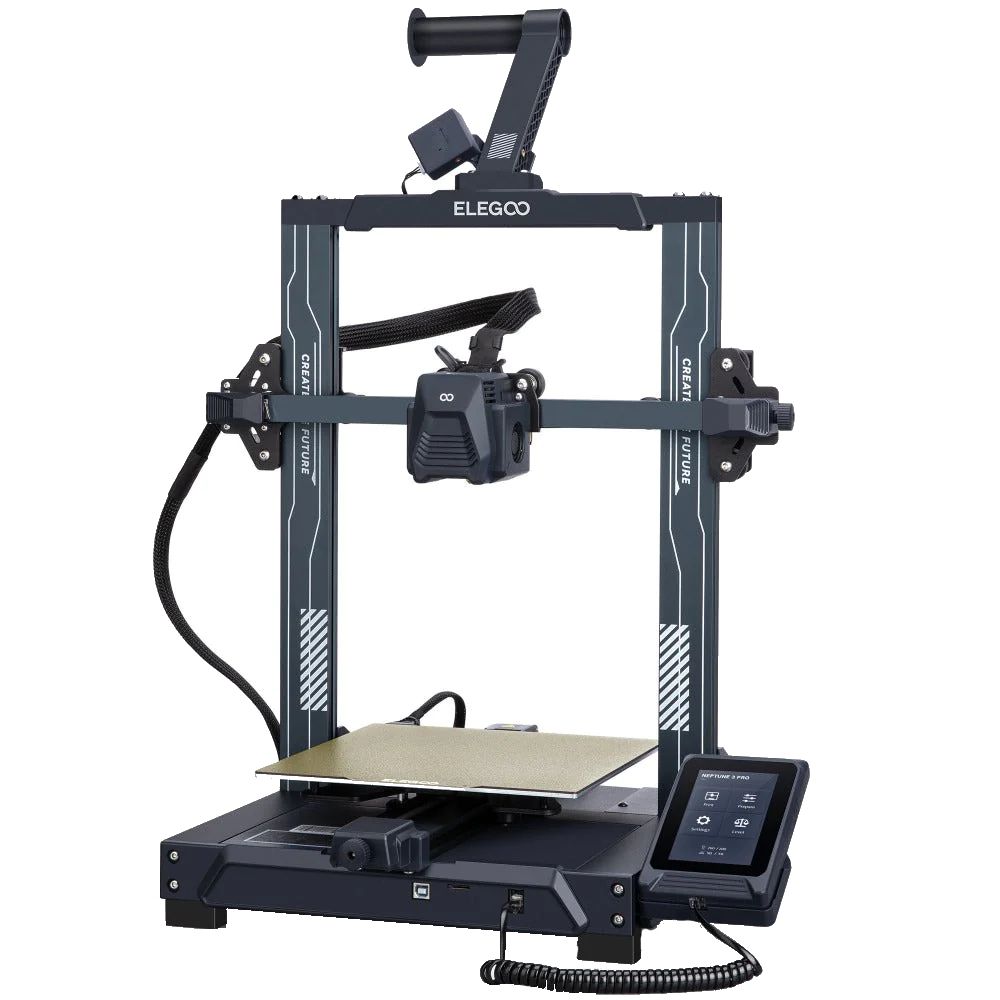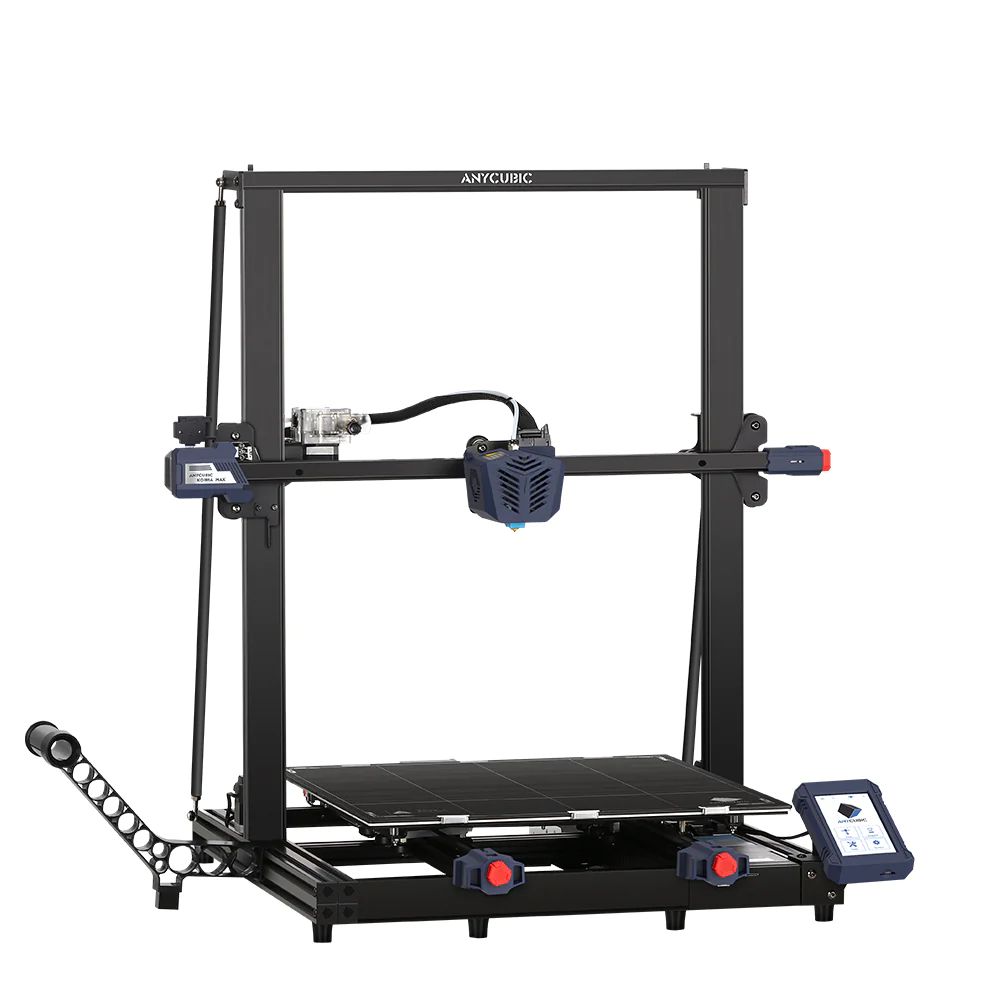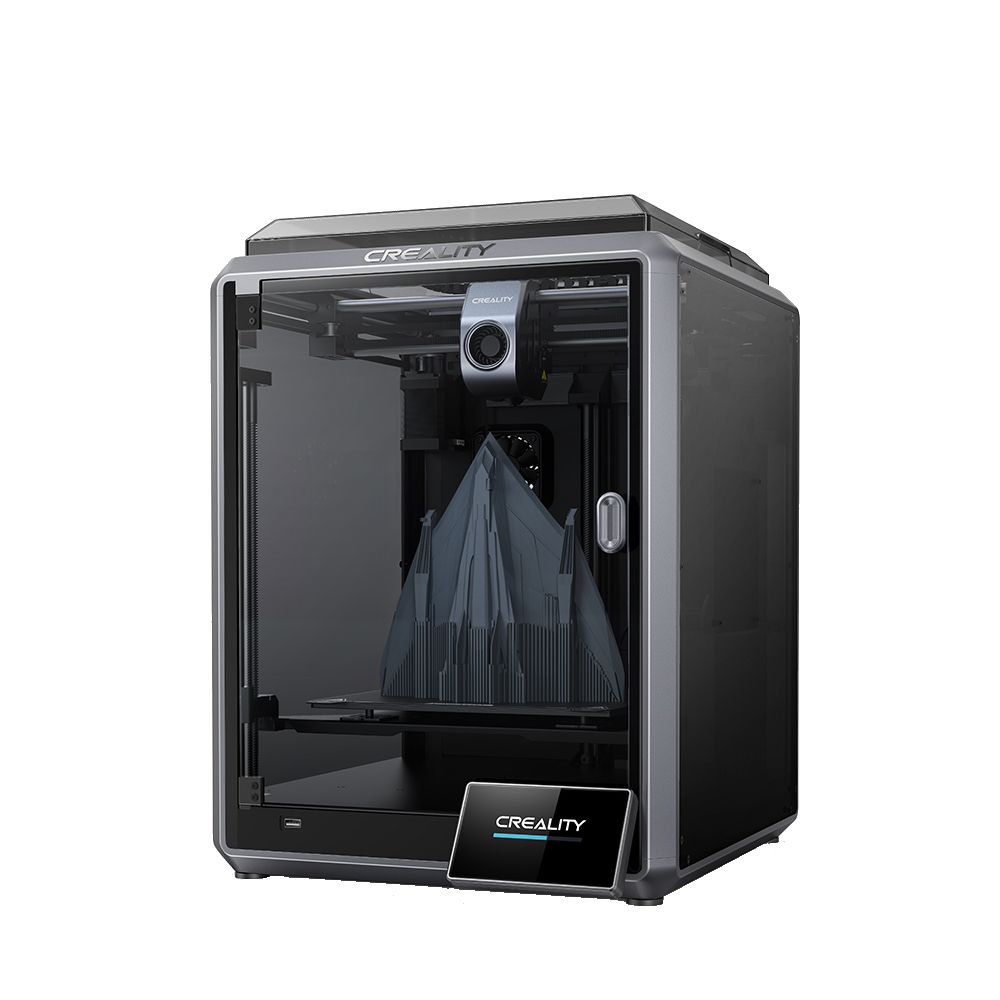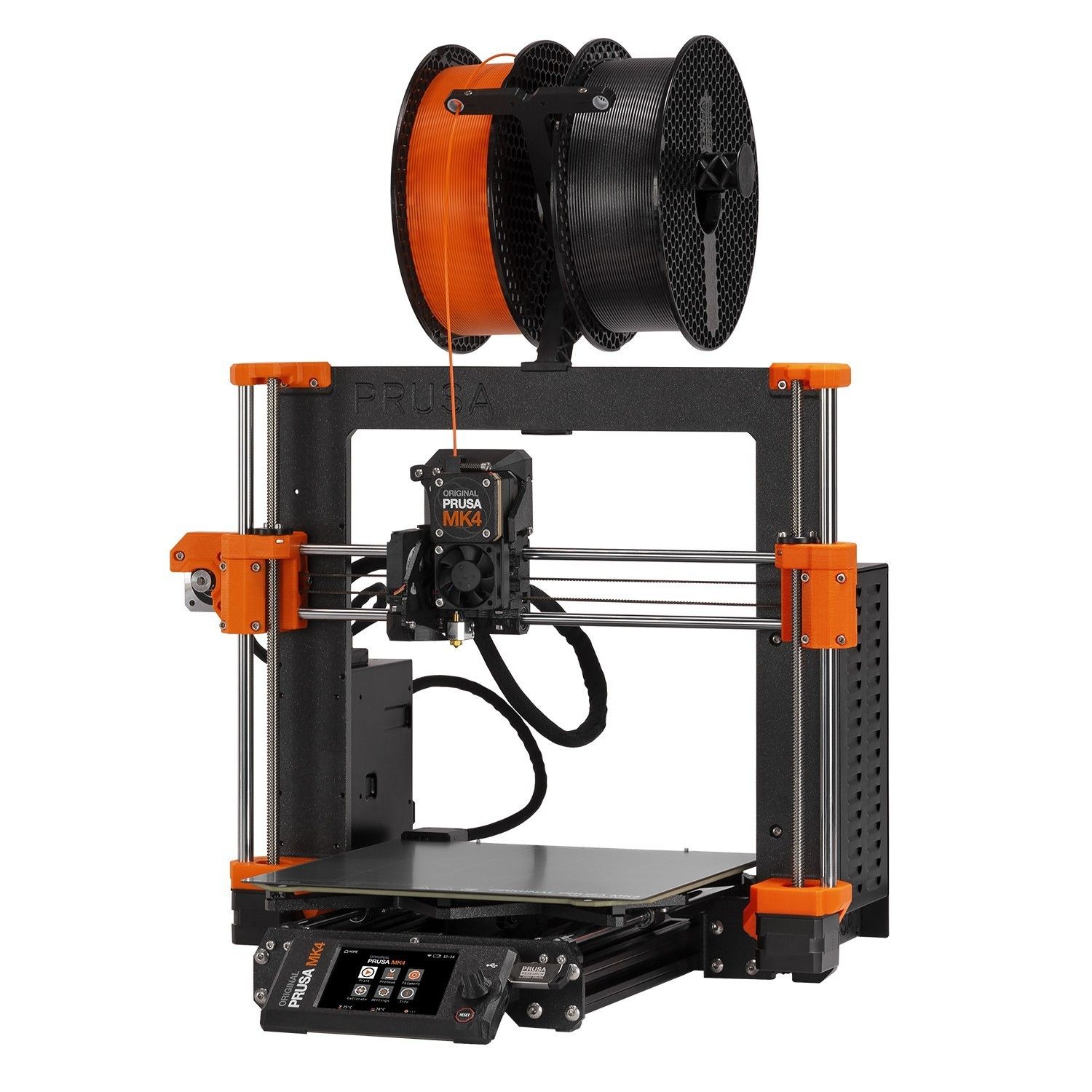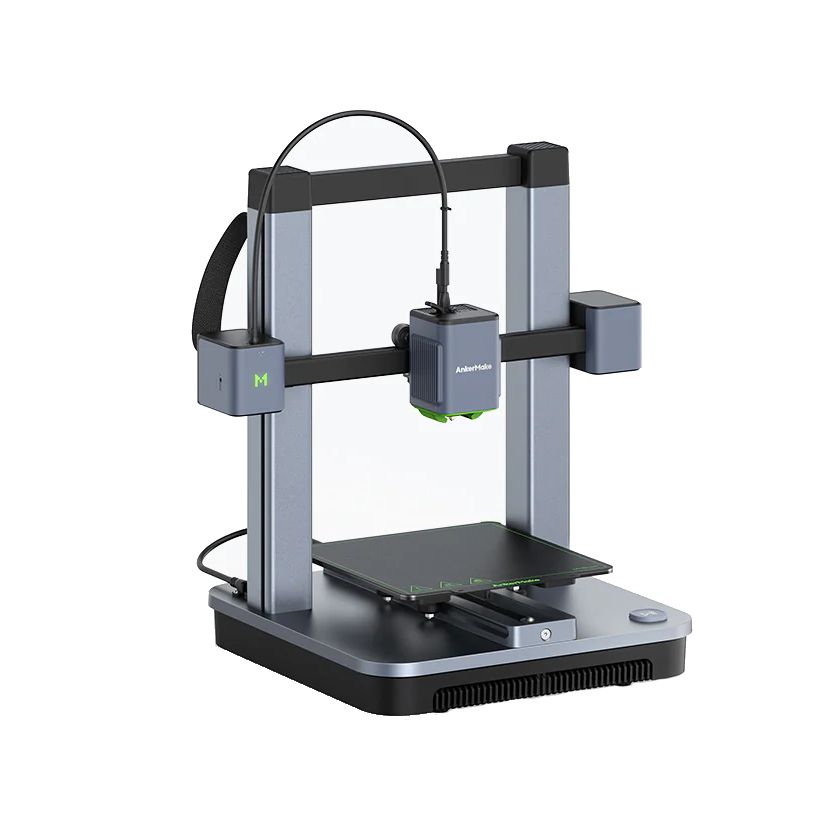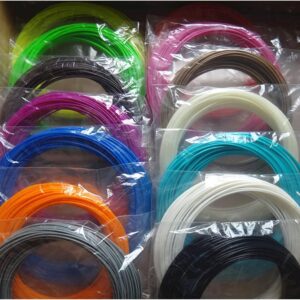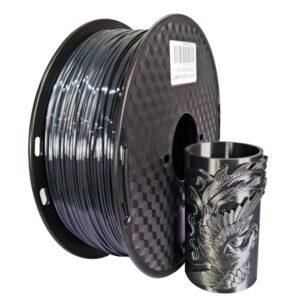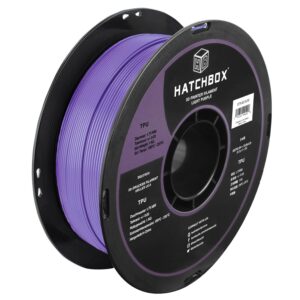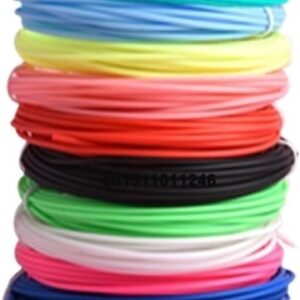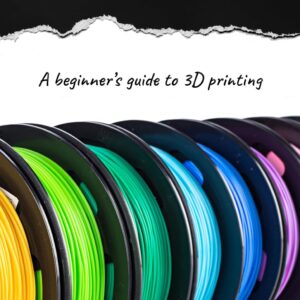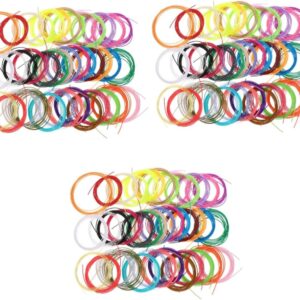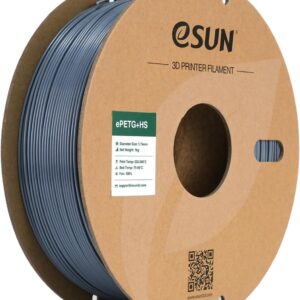FDM, or Fused Deposition Modeling, was one of the first 3D printing technologies, and with cheap and cheerful products in recent years, it’s where most owners start. We’ve also covered resin models in our overall guide to the best 3D printers, but here we’re looking exclusively at those machines that accept plastic in filament form and extrude it to form shapes.
Filament printers come either with an open frame where the bed moves (often called bed-slingers) or Core X/Y machines that are enclosed to enable the printing of high-temperature materials. As a rule, the more you spend on a filament printer, the faster it can output, the more materials it can handle, and the larger objects it can print. Other enhancements often found on more expensive models include wireless printing, removable print surfaces, auto-leveling, end-of-filament detection, cameras, and multi-material capabilities.
3D printing can have a steep learning curve for beginners, but these products pave the way for good results from the outset.
The best filament 3D printers around
Bambu Labs A1
Best overall
Top bed-slinger available
The newly released big brother to the Bambu Lab A1-Mini, the A1 offers the same 256mm cubed print area as its X Series and P Series brothers but in a bed-slinger form factor. The printer can be bought independently or with a four-reel AMS Lite for a very reasonable price.
Pros
- Great first printer
- Multi-material AMS
- High performance
Cons
- Limited filament types supported
When Bambu Lab created the A1-Mini printer, it shocked with its bed-slinger (not Core X/Y) design. It offered a 180mm cubed print volume, and now Bambu Lab has created a bigger 256mm print bed version, the A1.
The asking price for the A1-combo with the AMS (Automated Material System) Lite included is slightly more expensive than a typical Creality or Elegoo machine. But the performance, attention to detail, and out-of-the-box experience are undoubtedly worth it for this fantastic piece of hardware.
It can be bought without the AMS, but the extra cost of the combo is minimal, and it opens up the machine for multicolor and multi-material printing.
We’d go as far as to say that if you only intend to print PLA, PETG, and TPU, then the A1 might be a better choice than the Bambu Lab P1S and a cheaper option. The A1 offers high speed, a greater print volume than the typical Ender 3 clone, easy-to-swap nozzles, Cloud printing, multi-material printing, a magnetic print surface, a branded slicer, and a mobile phone app to control the printer and view the print.
Its only weakness is that, without an enclosure, it’s not a good choice for ABS or PC printing, but that’s what the Bambu Lab X1 and P1S are for. It is probably the most disruptive 3D Printer of 2023 and one that will convince many to switch to using Bambu Lab hardware.
Creality Ender 2 Pro
Best value
Great printer for the price
$165 $179 Save
$14
Oddly, this printer came after the Creality Ender 3, not before. The design boils filament printing down to its most basic yet retains enough functionality to generate decent results. It has a tiny print area, but for those printing small objects, like tabletop terrain, it’s a cheap option.
Pros
- Inexpensive
- Prints cleanly and quickly
- Easy to move around
This printer didn’t come before the Creality Ender 3 and its derivatives, but after. With such a small 165mm-by-165mm-by-80mm print volume, Creality did away with one side of the frame and created a cantilevered printer design that’s easy to pick up and move.
Compared to other Creality designs, assembly is simple, and most users should have the Ender 2 Pro ready to print within a few minutes of unboxing. While most won’t expect many features at this price point, the Ender 2 Pro uses many of the same parts as the CR-10 and Ender 3, and therefore, replacements are remarkably inexpensive. One specialist part is the spring-steel magnetic print surface, which enables easy removal of prints by flexing the sheet.
The Ender 2 Pro core’s operating system is the popular Marlin OS, a solution that is supported by every slicer. But Creatity has a branded version of Cura with Ender 2 profiles designed to get the most out of this hardware.
In summary, the Creality Ender 2 Pro is a budget-friendly starting point for those wanting to explore 3D printing for the first time, but with a small print volume, some owners will outgrow it quickly. However, it’s small and easy to store, so there are plenty of reasons to keep the Ender 2 around should you need a reliable workhorse to churn out PLA, PETG, or TPU parts in short order.
Bambu Lab P1S
Premium pick
Speed and flexibility come at a price
An evolution of the Bambu Labs X1 Carbon, the P1S embraces the same high-quality construction but is cheaper for those who want an enclosed Core X/Y printer. Since it’s enclosed, the P1S can handle challenging filament types such as Nylon, Polycarbonate, and ABS. Surpassed only by the Bambu Lab X1 and X1 Carbon, this is a veritable 3D printing jack-of-all-trades.
Pros
- Enclosed printer for all filaments
- High speed
- Optional multi-material
After Bambu Lab had launched the X Series printers, many wondered when they might make machines that would be more affordable. A response to these requests came with the P1P and now the P1S. This latest P Series design retains most of the print functionality and speed of the X1 series. It is fully enclosed, includes a camera as standard, and has access to the multi-material AMS. Therefore, unless you want the Kudos of an X1 or X1 Carbon, the P1S can deliver the same print quality and speed for a fraction of the cost.
To achieve this low price point, Bambu Lab removed the LIDAR equipment, and it has a lower-quality camera and a simpler monochrome display. But the print engine is practically unchanged, and this machine can churn out parts in the same wide range of filament materials as its older brothers.
As an enclosed volume, this print environment can be temperature controlled, and it is possible to connect an external vent to remove unwanted off-gassing that comes with printing high-temperature polymers. The cost without the AMS is at least twice that of the better bed-slingers, but those who use this machine wouldn’t easily be convinced to swap it for anything else.
Elegoo Neptune 3 Pro
Affordable bed-slinger
Cheap and cheerful printer
$209 $300 Save
$91
The Elegoo Neptune 3 Pro, an inexpensive option with many advanced features, is fantastic value for the money. Like an Ender 3 on steroids, this design sports a direct drive extruder, auto bed leveling, a filament run-out sensor, and a magnetic PEI print sheet, all standard.
Pros
- Great first printer
- Multi-material AMS
- High performance
Cons
- Limited filament types supported
The Neptune 3 Pro by Elegoo emerges from a long line of bed-slingers that began with the RepRap community before Prusa and Creality popularized it with their i3 and Ender 3 product lines. But don’t assume it’s just a Nepture 3 with a few unique features because this is an almost entirely unique design enhanced in numerous ways. Some enhancements, like the direct drive extruder, make it more useful for filaments that have issues with Bowden tube extruders, like flexible TPU.
Features like that extruder, the dual synced leadscrews, the flexible magnetic PEI sheet, and the conductive sensor probe for perfect first layers are all features missing from sub-$200 printers only a few years ago. While the X and Y printable area is the same size as the classic Creality Ender 3, the Neptune 3 Pro has marginally more vertical travel, enabling larger prints in the Z direction.
So, where does the Elegoo Nepture 3 Pro fit into the landscape of 3D filament printers? It’s a better Ender 3, inexpensive, and suitable for gentle tinkering. If you can’t afford one of the Bambu Lab printers, this might be an appropriate first printer for those wanting to experiment with the technology without spending heavily.
Anycubic Kobra Max
Best large format
Big printer for big prints
$399 $569 Save
$170
Printing big objects demands a large-scale printer, and the Anycubic Kobra Max certainly fits into that category. With a 400-by-400mm bed area and 450mm of Z travel, this is an ideal filament printer for anyone making props or large sculptures.
Pros
- Massive print area
- Reasonably priced
- Some useful features
Most filament printers have a small print volume. To print anything bigger often requires using software to split the object up and then glue it back together after printing. But with a 400-by-400-by-450 print volume, the Anycubic Kobra Max can render some substantial parts without the need to divide them. Where large format printers generally disappoint is with their speed, and compared to the Bambu Lab and Prusa Research products, the Korba Max is slower. But it can achieve 80-100mm/s, and that’s respectable when you consider that most bed-slingers can only manage 50mm/s reliably.
What is slightly confusing is that Anycubic supplies this printer with a 0.4mm nozzle. It might have been better served with a 0.6mm or even 0.8mm. To reduce print times on larger objects, some loss of quality by using a wider nozzle is considered an acceptable trade-off. These alternative nozzles are inexpensive, but swapping them over can be a chore.
The Kobra Max’s stand-out features are an easy-to-use 4.3-inch touchscreen, auto bed leveling, dual Z-axis leadscrews, and filament run-out protection. Until Bambu Labs makes a high-speed, large-format printer, designs like the Kobra Max will have a place with those making cosplay props. While it is only suitable for PLA and PETG printing, as the bed doesn’t get hot enough for ABS, it’s still an effective tool for an experienced craftsman.
Creality K1
Best cheap enclosed
Speedy, enclosed design
$499 $599 Save
$100
Creality’s answer to the Bambu Lab P1S, the K1 has many features overlapping with the Bambu Lab Core X/Y designs but is cheaper and uses open-source Klipper software. While not as sophisticated as its Bambu cousins, it can print quickly and supports plenty of material types.
Pros
- High speeds
- Cheaper than Bambu Lab P1S
- Prints all materials
Cons
- Smaller build volume than Bambu Lab
- No multi-material options yet
When the K1 first arrived, it looked like a clone of the Bambu Lab X and P series printers, but it has turned out to be no less impressive when considering the low cost of ownership. Probably one of the cheapest Core X/Y printers with a full enclosure available, and since the print process is not exposed, it prints the full range of material types.
What the K1 can’t match is the build volume of the Bambu Lab X1 or P1S, having a print volume of 220-by-220-by-250mm. Approximately an inch smaller in X and Y, making larger parts like those for helmets more challenging on the K1. Currently, the K1 doesn’t have a multi-filament system, even if Creality has promised that one is in development.
The quoted top speed of 600mm/s is slightly exaggerated, though average speeds of at least 180mm/s are possible. Creality is offering upgrades that provide an AI Camera and is promising LiDAR filament analysis soon, but these increase the cost above that of the Bambu Lab A1.
If you can work with the print volume, the K1 is an excellent option. And if you need more space, the K1 Max increases the print volume to 300mm cubed.
Original Prusa MK4 3D Printer
Best rapid and reliable
New Prusa flagship
With the Prusa i3 being such a success, the MK4 was highly anticipated. It doesn’t stray too far from the original bed-slinging concept but does deliver quick-swap nozzles and perfect first layers. The 3D-printed elephant in this room is the price, unfortunately.
Pros
- Input shaping for higher speeds
- Prusa Slicer
- Prusa support
Cons
- No accelerometer
- Expensive even for kit
It took five years from the Prusa MK3S+ to the MK4, a time that seemed like an eternity for fans of this brand and its printers. When the MK4 finally arrived, it all seemed remarkably familiar, with the signature framed bed-slinger design, 3D printed parts, and a print volume of 250-by-210-by-220 mm. As they say, the devil is in the details, and the MK4 was given a major overhaul of the hot end, auto-bed leveling, added input shaper, and dramatically faster print speeds.
Prusa printers have a strong reputation for repeatable and reliable output, making them ideal for educational users and those who just want rapid part production. Prusa claims that the 120C heated bed of the MK4 allows the printing of any filament type, and they make a separate enclosure to control the environment for Polycarbonates, HIPS, and composite materials.
The problem for Prusa, and it’s a big one, is that the asking price is well above what Bambu Labs is asking for a fully enclosed printer with a larger print volume and a multi-material accessory. You can get the MK4 as a kit, reducing the cost by some $300, but it can take over 10 hours to assemble if you have the skills to accomplish that exercise. Prusa fans will revel in its advanced features and high performance, but those working on a budget will probably get the Bambu Lan A1 Combo instead.
AnkerMake M5C 3D
Good design and features
Great output at a great price
A follow-up to the original AnkerMake M5, the M5C is a much cheaper design with a few minor things left out, but most of the better features are still intact. Admittedly, it no longer has a touchscreen or camera, and the print area is smaller, but it can still output some great results.
Pros
- Inexpensive
- Works with AnkerMake, Cura, and PrusaSlicer
- Good quality output
When the AnkerMake M5 arrived, many reviewers loved it almost unreservedly, except for the price. AnkerMake then created the M5C, a cost-reduced version where some more expensive parts were ditched to make a more budget-friendly offering. The first feature that most customers will notice missing is the display. The M5C only has a pause/play button, as a computer drives the print process entirely. If you print something and want another copy, the button can initiate a print of the previous output, but the AnkerMake software is required to send prints to the machine initially.
You can use Cura or PrusaSlicer with the M5C, but recent firmware updates now warn you that these superior slicers might not deliver the best results. But for now, these options aren’t blocked. While the AnkerMake software is good, it doesn’t have all the features of the alternatives, and because this machine has no SD card slot, you are encouraged to use it.
What the M5C does include is a durable direct-drive hot end, wireless connectivity, interchangeable nozzles, decent print speed, and high-quality output. However, the nozzles are proprietary to AnkerMake, even if a pack of ten isn’t much. Overall, the AnkerMake M5C is a decent, if somewhat quirky, design and a good choice for someone new to the hobby to explore the possibilities.
Choosing a printer for you
There are many reasons for buying a 3D printer, but it essentially boils down to what materials you want to print, the scale of the objects, and the speeds you expect. While a camera that records time-lapses is nice, it doesn’t impact the parts you make, and a multi-material system won’t improve monochrome parts.
The Bambu Lab A1 is our top choice. Exceptional speed, print quality, and an affordable multi-material add-on make the A1 incredible value for money and a veritable 3D printing factory.
The Bambu Lab P1S is the premium pick as it delivers a highly flexible enclosed solution that copes with all filament types, generates parts quickly and accurately, and the printer arrives fully assembled. It can also be expanded with the multi-material AMS, and using another accessory, four of these can be added for sixteen filament sources.
If the cost of the P1S is an issue, the same print quality with the four-color AMS Lite can be had for less with the Bambu Lab A1 for a lower price if you are willing to accept printing only PLA, PETG, and TPU. The budget selection is the Creality Ender 2 Pro, a machine that is highly affordable and easy for someone new to the hobby to use and understand. It may only have a small print volume, 180mm cubed, but it can still make some useful objects within that space.
As for the other printers listed here, they all have their own uses and specialties. The Creality K1 is a cheaper, if slightly smaller, alternative to the Bambu Lab P1S, but an enclosed design is required. The Anycubic Kobra Max has a huge print volume that can a cosplay helmet in a single piece, and the Elegoo Neptune 3 Pro is a reliable workhorse.
Bambu Labs A1
Best overall
Great all-purpose bed-slinger
The Bambu Labs A1 is a new all-singing and dancing 3D printer from the market leader. The A1 offers the same 256mm cubed print volume as the X1 and P1S but in a bed-slinger design. It can be purchased just as the printer or as part of a Combo with the AMS Lite multi-material system.

